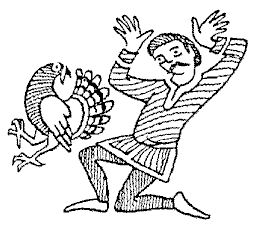 |
Science Frontiers ONLINE No. 81: May-Jun 1992 |
|
|
Biological Evidence For Two Very Early New World Contacts

|
Comment. The Bayeux Tapestry turkey, in particular, questionable. In fact, a careful search has not found it! See: SF#103.
An archeological hot potato! Mangaia is a small volcanic island in the Cook Island group. During the excavation of a rock shelter on this island, large fragments of sweet potato were discovered. These were subsequently carbondated at about 1000 AD.
"The prehistoric transferral of this South American domesticate into Polynesia obviously raises issues of cultural contact between the coast of South America and the Polynesian Islands. In our view, the most likely transferrors would have been the seafaring Polynesians, on a voyage of exploration to South America and return."
(Hather, Jon, and Kirch, P.V.; "Prehistoric Sweet Potato (Ipomoea batatas) from Mangaia Island, Central Polynesia," Antiquity, 65:887, 1991.)
Comment. What cultural imperatives would impel the Vikings and the Polynesians to reach out to the New World at almost the same time in history but from opposite sides of the world?